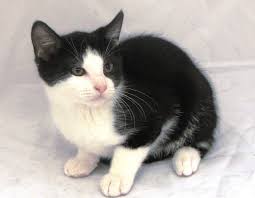 |
| The closest picture I could find that looks a lot like she looked: Mr. Johnnie Walker |
Topics: Biology, Physics, Physics and Pop Culture
We named her Felix, and probably should have named her Felicia, but she answered to that name. She was a stray my oldest son fed at our front stoop in Texas. From that point on, we had a cat.
We also had one of the best "mousers" I've ever seen. In four days she once brought four dead field mice to the front door. I used to hear it was a sign of affection, but in reality, Felix was in her own motherly way teaching me how-to mouse for myself (er, thanks). I hid them before my wife saw them all. By the fourth, she gave me a disappointed and disgusted look: "cub, you need to fix your mouse problem!" I remembered and removed the logs in the back of the house, and my rodent problem disappeared. She ruled the roost including our dog, literally terrified our Black Lab that outweighed her by 60 pounds!
Cats are often associated with a sixth sense or mystical powers, the usual go-to explanation we humans give when we don't fully understand a phenomena (see: "The Demon-Haunted World: Science as a Candle in the Dark," by Carl Sagan). This research makes a lot of sense. The article reminded me how much we all miss her. She lived to be 21-years-old, not making the trip from Texas to New York and died peacefully in the very place we found her after quietly mewing and curling up for the last time...on our front stoop. RIP, Ms. Felix.
TOKYO, June 14 (UPI) -- Experiments by researchers at Kyoto University in Japan suggest cats have rudimentary understanding of physics and the principle of cause and effect.
Previous studies have shown cats use their hearing to anticipate the presence of hidden objects. Most recently, researchers tested whether cats could anticipate an object's presence in a box based on the sound made when shaking the box. The researchers also tested whether cats expected an object to fall from a box when it was flipped upside down. The findings were published this week in the journal Animal Cognition.
Abstract
We used an expectancy violation procedure to ask whether cats could use a causal rule to infer the presence of an unseen object on hearing the noise it made inside a container and predict its appearance when the container was turned over. We presented cats with either an object dropping out of an opaque container or no object dropping out (turning-over phase) after producing either a rattling sound by shaking the container with the object inside, or no sound (shaking phase). The cats were then allowed to freely explore the experimental environment (exploration phase). The relation between the sound and the object matched with physical laws in half of the trials (congruent condition) and mismatched in the other half (incongruent condition). Inferring the presence of an unseen object from the noise was predicted to result in longer looking time in the incongruent condition. The prediction was supported by the cats’ behavior during the turning-over phase. The results suggest that cats used a causal-logical understanding of auditory stimuli to predict the appearance of invisible objects. The ecology of cats’ natural hunting style may favor the ability for inference on the basis of sounds.
United Press International: Cats use simple physics to zero in on hiding prey, Brooks Hays
Comments